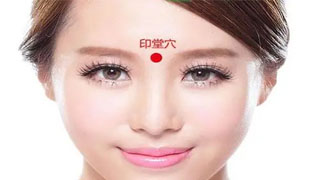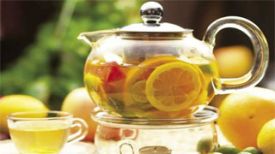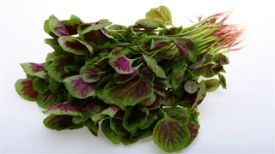
Yintang Cave is the name of the Jing Wai Cave, also known as Qu Mei (from the Tang Dynasty's "Qian Jin Yi Fang"); Guangming (from the Tang Dynasty's "New Collection of Urgent Moxibustion Classics") is also known as the sedative acupoint in modern times. Yintang acupoint is the gathering place of the three major meridians in the human body. They are: the Foot Sun Bladder Meridian originating from the inner corner of the eye; Originating from the Foot Yangming Stomach Meridian near the nose; The Ren vein that passes through the center of the seal hall. The bladder meridian governs the body's yang qi, the stomach meridian governs the blood qi, and the Ren meridian governs the body's yin. The Yin Hall gathers people's yang, blood, and yin energy, so its condition is closely related to our health.
【 Indications and Functions 】
Yintang acupoint has the effects of clearing the head, improving vision, and opening the nose and orifices. There are also the following therapeutic effects:
1: Treat headaches, dizziness, anterior pain, vertigo, redness and swelling of the eyes, trigeminal neuralgia, eye diseases, etc;
2: Treat nasal congestion, runny nose, rhinitis, nasal diseases, etc;
3: Treat hypertension, insomnia, mental fatigue, etc;
4: Regular massage of the Yintang acupoint can enhance the proliferative ability of nasal mucosal epithelial cells, promote mucus secretion, keep the nasal cavity moist, and stimulate olfactory cells, making the sense of smell more sensitive. It can also prevent colds and respiratory diseases.
Clinical Application
1: Eye pain: with Cunzhu point, Sizhu hollow point, Sibai point, and temple (Simple acupuncture and moxibustion Therapy).
2: Nasal obstruction: Yingxiang point, Hegu point, Fengfu point, Yuji point (acupuncture and moxibustion Compendium).
3: Nasal Abyss: Paired with Xing acupoint, Qu Cha acupoint, Feng Men acupoint, and He Gu acupoint (as shown in the "Yi Jing Tu Yi").
4: More than epistaxis: cooperate with Gu point, Shangxing point, Bailao point, Fengfu point, Yingxiang point, Renzhong point, Jinggu point (acupuncture and moxibustion Dacheng).
5: Headache: matched with acupoints of temple and Fengchi (acupuncture and moxibustion, edited by Shanghai College of Traditional Chinese Medicine).
6: Head weight: equipped with the Zhuzhu acupoint (according to the Compendium of Medicine).
7: Vertigo: with Sizhu Kongxue, Touwei (Collection of acupuncture and moxibustion Medical Records).
8: The two eyebrow corners are painful: Houxi, Cunzhu, Yangbai, Hegu and Touwei (Complete acupuncture and moxibustion and Moxibustion).
9: Tongue tip prickly heat: accompanied by acupoints at the fingertips, neck Bai Lao, Cheng Nian, Shao Chong, and Shao Fu (according to the "Acupuncture Therapy Method").
10: Apoplexy and unconsciousness: Zhongchong, Baihui, Dadun, Hegu (Convenience of acupuncture and moxibustion).
11: Angle bow anti tension sha: paired with Baihui acupoint, Tianting acupoint, Lip center acupoint, Zhongwan acupoint, and Tianbai bone acupoint ("Sha Jing He Bi").
12: Postpartum blood halo: with Zhigou point, Zusanli point (Simple acupuncture and moxibustion).


